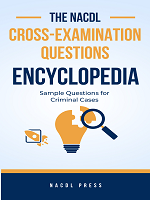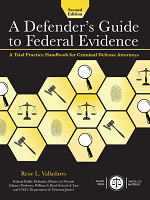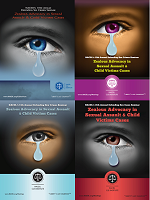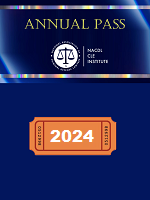Access to The Champion archive is one of many exclusive member benefits. It’s normally restricted to just NACDL members. However, this content, and others like it, is available to everyone in order to educate the public on why criminal justice reform is a necessity.
Author’s Note: The article originally appeared in JURIST (http://jurist.org), a Web-based legal news and legal research service at the University of Pittsburgh School of Law in Pittsburgh, Pa.
Imagine a criminal prosecution in which a trial judge unlawfully imposed a far longer sentence on a young man than the law prescribed, even though his lawyer, the prosecutor, and every appellate judge reviewing the sentence agreed that was the case. Now imagine that notwithstanding the universal agreement that the sentence was improperly enhanced, the man cannot obtain relief from the courts. Well, such has been the fate of Armarcion Henderson, whose case, Henderson v. United States, was argued before the Supreme Court on Nov. 28, 2012.
Mr. Henderson, who was 26 years old at the time of his sentencing, had entered a plea of guilty to a single-count indictment that charged him with being a felon in possession of a firearm. He faced a sentence of 33 to 41 months under the advisory Sentencing Guidelines. Neither the government nor his defense counsel objected to that sentencing range. However, his counsel noted that Mr. Henderson had a drug problem for many years and urged the court to order drug treatment as part of his sentence. And the court did just that. But, to do so, the judge imposed an above-Guideline sentence of 60 months imprisonment — the minimum sentence necessary to qualify for the Bureau of Prisons’ 500-hour Residential Drug Abuse Program.
Unfortunately, neither the court nor counsel for either side considered 18 U.S.C. § 3582(a), which provides that “imprisonment is not an appropriate means of promoting correction and rehabilitation.” Eight days later, defense counsel filed a Rule 35(a) motion bringing the statute to the district court’s attention, and seeking to correct the sentence as clear error. By the time the court ruled on the motion, however, it concluded it no longer had jurisdiction to correct the error.
At issue in the case is the meaning of the plain error rule, Federal Rule of Criminal Procedure 52(b), which provides a narrow avenue by which a defendant may obtain relief even though there was no timely objection. On its face the rule is clear and concise: “A plain error that affects substantial rights may be considered even though it was not brought to the court’s attention.” But the briefing in the case and the oral argument suggest that the rule is anything but clear, and from a practical standpoint may lead to absurd and unjust results.
The anomaly in Mr. Henderson’s case is that notwithstanding the statute that bars imprisonment as a means of promoting rehabilitation, the Fifth Circuit had never addressed the question of whether a longer sentence may be imposed to promote rehabilitation or to qualify for a treatment program. But, while the Henderson case was pending on appeal, the Supreme Court unanimously held in Tapia v. United States1 that “a court may not impose or lengthen a prison sentence to enable an offender to complete a treatment program or otherwise to promote rehabilitation.” One would think that the existence of the statute, coupled with the pronouncement by the Supreme Court, would have entitled Mr. Henderson to the salutary effects of Rule 52(b) when his appeal was heard. Surely the error at the district court level was plain, and it clearly affected a substantial right by subjecting him to as much as 27 additional months of imprisonment. Not so. The circuit panel agreed that the sentence was erroneous, but held that Henderson could not avail himself of the Tapia ruling since it was not “clear or obvious” because it was not plain at the time the trial court imposed sentence. As Justice Kennedy suggested at the Supreme Court oral argument, it turns out that the plain error rule is a matter of “metaphysics.”
Does the plain error rule apply when the law in a circuit is unsettled at the time the error is committed but becomes clear by the time of the appeal? This is the core issue. In the Olano2 and Johnson3 cases the Supreme Court noted, but did not decide, the question. Mr. Henderson, and NACDL in an amicus brief, urge that the text, history, and case law construing Rule 52(b), as well as fundamental justice and judicial economy, compel the conclusion that the rule should apply at “the time of appeal,” irrespective of the state of the law in the lower court at the time of the error. The government argues the opposite on each point and that the error must be plain at “the time of trial.” The essential divide is the tension between a rule that permits the correction of clear errors on appeal and one that seeks to encourage timely objections that will promote efficiency and finality. The competing arguments are thoroughly explicated in the briefs filed by the parties and the amicus brief filed by NACDL.4
From a criminal defense practitioner’s perspective, the idea that the saving provisions of Rule 52(b) should not apply when the law is unsettled at the time of trial is the height of absurdity and the essence of injustice.
Irrespective of how the case is decided, the sense of the injustice permeated the oral argument.5 For example, even Justice Scalia, who clearly seemed to favor the time of trial rule, nevertheless noted that “[t]he district court got it wrong, applied the wrong rule. Justice has not been served.” Justice Alito, who also seemed disposed to favor the time of trial rule, asked the government, “What about Mr. Henderson sitting in prison, serving a sentence what we now know was imposed for a reason that is not permitted under Federal sentencing law? Is there anything that can be done for him?”
Justice Kennedy, who earlier in the argument expressed the view that maybe there should be a time of trial requirement for some errors, but a time of appeal error for sentencing errors, asked this of the government: “And is there any relief for him [Mr. Henderson] in the regulations of the Bureau of Prisons or the government — other than a pardon, I suppose?” Justice Ginsburg observed, “I can’t imagine anything more vital than being deprived of 19 to 27 months of freedom.” Responding to the government’s argument that Rule 52(b) relief should be reserved only for those “obvious errors that everyone in the courtroom should have caught,” Justice Breyer said, “I mean, in fact, the reason that I said that you’re going to create distinctions, there will be a case, the fellow is going to go to jail for 50 extra years, the law is plain that he shouldn’t, that didn’t come about until the appeal.”
The apparent injustice in the case is matched only by the absurdity of the rationale that would bar Rule 52(b) review only when the law was unsettled at the time of trial. The restrictive nature of Rule 52(b), which on its face requires both plain error and an adverse effect on substantial rights to permit consideration of an unpreserved error, has been further limited by pre-existing Supreme Court precedent. Olano6 established a strict four-prong test. That test requires that (1) there was error; (2) the error was plain; (3) the defendant must show harm to a substantial right; and (4) no error may be corrected unless it “serious affect[s] the fairness, integrity or public reputation of judicial proceedings.”7 Notwithstanding that high threshold for relief, a principal argument against the time of appeal application of the rule is that lawyers will somehow have an incentive not to object in cases where the law is unsettled at the time of trial. This then will lead to great judicial inefficiency because errors that could have been avoided or corrected at trial will be redressed on appeal and therefore lead to retrials.
Justice Breyer honed in on this concern and suggested that it is utterly fanciful:
Their point is that the system works in a way that requires the lawyer to object at the trial. All right. And that is an efficiency because the trial judge has to correct, has an opportunity to correct mistakes. He can’t be sandbagged. But, you said, that’s theoretically always true, but, in your case, as a practical matter, it’s never really true because no lawyer is ever going to think, oh, I would object, but I’m not going to object because maybe the law will become clarified by the Supreme Court, and I’ll be able to get a plain error thing on appeal. The lawyer who thought that is like the unicorn, he doesn’t really exist.
Even Justice Scalia agreed, stating that “I can also not imagine a lawyer who intentionally makes that decision. That lawyer is a unicorn, I suppose.” But then, when Justice Scalia continued with the suggestion that the time of trial application of the rule would encourage lawyers to be more thorough in identifying and raising all the issues, it was Justice Kagan’s turn to make the unicorn analogy: “Isn’t it just as much of unicorn for an attorney to say, ‘I’m not going to take great care because I think that the law is going to change between now and the appeal’?”
The simple fact is that it is pure fiction to suggest that any lawyer purposefully fails to preserve a substantial right of a client. And to think that a lawyer would do so only if the law is unsettled, foregoing an opportunity to persuade the judge to rule for the benefit of the client, and simultaneously preserve the error for certain consideration on appeal, is nonsense. No lawyer would intentionally forego a chance to win the point, or obtain appellate review, solely on the speculative hope that maybe the law will become clear while the appeal is pending. Nor would a lawyer want to run the risk that the law may become clear in a way that would disadvantage the client.
Furthermore, in terms of efficiency, the NACDL amicus brief makes the point that a time of trial rule will require appellate courts to devote substantial resources to determining whether the issue was settled at the time of trial. For example, in Mr. Henderson’s case, it could be argued that the existence of the statute that barred enhanced incarceration for rehabilitative purposes rendered the law clear. In fact, in Tapia, the Court not only ruled unanimously, but it did so after the government joined the defendant in seeking to overturn the circuit court decision. Thus, even though the Fifth Circuit had not ruled on the issue, it was at least arguable that the law was not in fact unsettled when Mr. Henderson was sentenced.
If the Court applies the time of trial rule for plain error, the ultimate absurdity may ensue. Individuals in circuits where the law is settled — and therefore their attorney would have no basis to object — may get the benefit of a subsequent ruling that changes the law in their favor. But similarly situated individuals in circuits where the law is unclear or undecided will not. That seems like a pretty obvious injustice. Justice Breyer observed that six identical people in a circuit where the law was settled in one way could get the benefit of Rule 52(b) review, and six identical people in a circuit where the law was settled in another way could get the benefit, but a person in the one circuit where the law was not clear would not get the benefit of review. He termed that scenario “just a horror.”
When the decision comes down, we will know whether the rule will address this potential injustice, or whether the assumption that lawyers are unicorns has taken hold. One thing is certain. For Amarcion Henderson, whatever the decision is, at best it will provide minimal relief from his unjust sentence. He will complete his 60-month term of imprisonment in May 2013.
Notes
- Tapia v. United States, 131 S. Ct. 2382 (2011).
- United States v. Olano, 507 U.S. 725 (1993).
- Johnson v. United States, 520 U.S. 461 (1997).
- The NACDL amicus brief in Henderson is available at http://www.nacdl.org/Advocacy.aspx?id=23374&libID=23344. The brief was written by John D. Cline and Barbara E. Bergman. Read the briefs of petitioner Armarcion Henderson and respondent United States at http://www.scotusblog.com/case-files/cases/henderson-v-u-s/.
- http://www.supremecourt.gov/oral_arguments/argument_transcripts.aspx.
- United States v. Olano, 507 U.S. 725 (1993).
- Id. at 736.






